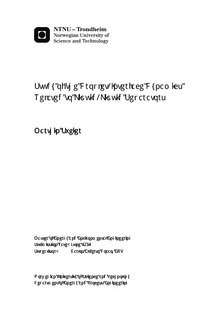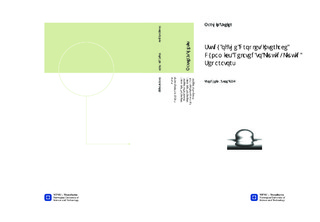| dc.contributor.advisor | Dorao, Carlos Alberto | nb_NO |
| dc.contributor.author | Sveier, Marthin | nb_NO |
| dc.date.accessioned | 2014-12-19T11:49:50Z | |
| dc.date.available | 2014-12-19T11:49:50Z | |
| dc.date.created | 2012-11-10 | nb_NO |
| dc.date.issued | 2012 | nb_NO |
| dc.identifier | 566994 | nb_NO |
| dc.identifier | ntnudaim:8314 | nb_NO |
| dc.identifier.uri | http://hdl.handle.net/11250/234958 | |
| dc.description.abstract | A widespread use of liquid liquid separators are taking place in many industrial processes, especially in production of hydrocarbons. The separators in oil production are used to separate water from oil, increasing the purity of petroleum and making cleaner produced water in order to meet quality and environmental standards. To improve the performance of the separators it is important to understand the complex dynamics taking place. The scope of this work has been to develop and build a facility for accurately studying coalescence and coalescence time which is a key parameter in separator dimensioning, the facility is designed for droplets ranging from 50 $mu m$ to 1000 $mu m$. The relationship of droplet size and coalescence time is especially interesting. Theory on droplet formation, behavior and coalescence mechanism are introduced and a special focus is put on generation of the smallest droplets. Earlier work in this field of study is presented in the background and literature study part. It covers a brief introduction to separator design, coalescence modeling by using basic principles as gravity and surface tension and generation of small droplets by deforming a meniscus with electrostatic forces. The facility has been developed by step-wise treating obstacles and requirements. Facility development is organized by the various parts and includes droplet generation, illumination, visualization and automation of the experiments. Unfortunately a high voltage amplifier malfunctioned due to a factory error and the generation of the smallest droplets was not demonstrated. The facility is successfully build and can generate, visualize and capture the coalescence for large droplets and is ready to accept smaller ones when the high voltage amplifier is repaired. While major parts of the facility is completed there is potential for improvement by further work. Besides from demonstrating the generation of the smallest droplets it should be aimed to complete the automation of the facility and to complete the post processing by deciding a decision criteria for coalescence time. In this way a fully automated facility producing and recording hundreds of droplets of a given size can be made, making it possible to do statistical evaluation of the relationship of droplet size and coalescence time. | nb_NO |
| dc.language | eng | nb_NO |
| dc.publisher | Institutt for energi- og prosessteknikk | nb_NO |
| dc.subject | ntnudaim:8314 | no_NO |
| dc.subject | MTENERG energi og miljø | no_NO |
| dc.subject | Varme- og energiprosesser | no_NO |
| dc.title | Study of the Droplet-Interface Dynamics Related to Liquid-Liquid Separators | nb_NO |
| dc.type | Master thesis | nb_NO |
| dc.source.pagenumber | 78 | nb_NO |
| dc.contributor.department | Norges teknisk-naturvitenskapelige universitet, Fakultet for ingeniørvitenskap og teknologi, Institutt for energi- og prosessteknikk | nb_NO |

